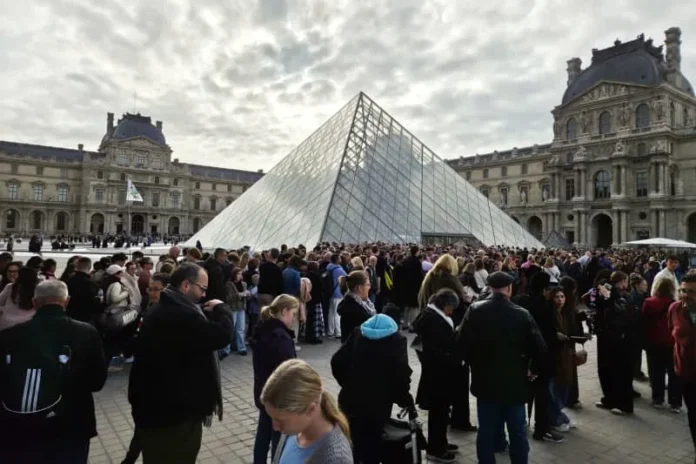
Five days after the audacious break-in at the Louvre Museum in Paris, part of its priceless jewellery collection has been moved to the Banque de France for safekeeping, French media reported on Friday.
The decision follows growing concern over the museum’s security after the daring €88 million heist stunned both authorities and the art world.
According to radio station RTL, the jewels were transferred under heavy police escort to the nearby Banque de France, where they are now secured in an underground vault located 26 metres below the surface. Broadcaster BFMTV later confirmed the report, citing corroborating sources close to the investigation.
The Louvre was evacuated and closed to the public last Sunday morning after four masked intruders broke into the Apollo Gallery, which houses France’s remaining crown jewels.
The thieves smashed open two reinforced display cases and escaped with eight pieces of jewellery once belonging to French queens and empresses, including diamonds, emeralds, and pearls of exceptional historical value.
The stolen items are estimated to be worth around €88 million ($102 million), making the theft one of the most significant art crimes in recent European history. Despite an intensive manhunt involving French police and Interpol, there is still no trace of the perpetrators or the missing jewels.
The Apollo Gallery, known for its ornate ceilings and symbolic importance as the home of France’s royal treasures, remains closed as forensic teams continue to gather evidence. The heist has reignited debate over the adequacy of security measures at major cultural institutions, particularly those housing irreplaceable artifacts.
Museum officials have not disclosed which specific items were moved, but sources suggest that all crown jewels and other high-value jewellery exhibits have been temporarily relocated. “Given the recent incident, this is an extraordinary but necessary precaution,” one security source told RTL.
The Banque de France’s underground vaults are among the most secure locations in the country, typically used to store 90% of France’s gold reserves. The decision to transfer the jewels there underscores the magnitude of the threat perceived by museum authorities.
Such transfers are rare and reserved only for objects of exceptional value or national importance. Leonardo da Vinci’s original notebooks, estimated to be worth more than €600 million, are already safeguarded in the same facility.
As investigators continue to review CCTV footage and trace possible escape routes, the Louvre’s management has promised a comprehensive security review. “Our priority is the protection of France’s cultural heritage,” a museum spokesperson said. “We are working closely with authorities to ensure that such an incident cannot happen again.”
For now, France’s royal jewels rest beneath the heart of Paris — not in their historic gallery, but in the fortified depths of the nation’s central bank — a stark reminder of both their beauty and their vulnerability.